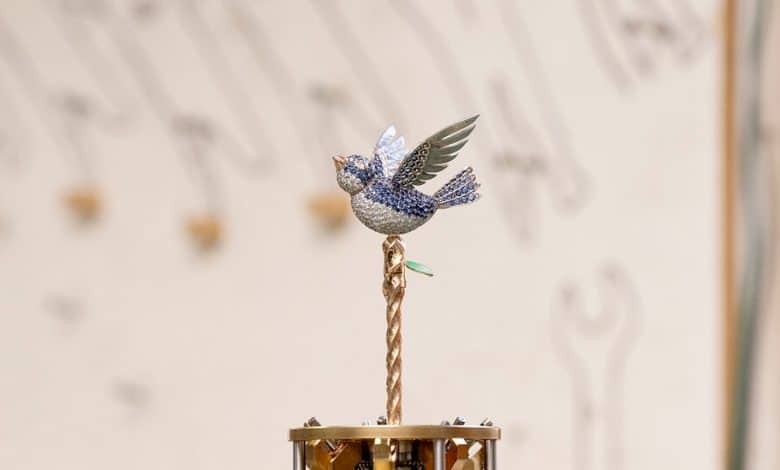How a Mechanical Songbird Takes Flight

These days, most special effects are created on computers. But in the 18th and 19th centuries, the automaton — an intricate mechanical device that could take the form of a preening silver swan or an organ-playing doll — was a popular source of entertainment and wonder. Now Van Cleef & Arpels is unveiling its latest take on that tradition: In his workshop among the mountains of Sainte-Croix, Switzerland, François Junod, a craftsman in his mid-60s who has devoted his life to making automatons, has been working for the past two and a half years on Apparition des Baies, a showstopping new piece for the Paris-based jewelry house.
At nearly 11 inches in height, the bejeweled object might be mistaken for a flamboyant kitchen egg timer. Two layered discs carved out of Dalmatian jasper support a pink-hued thulite bowl; the materials were selected by the brand’s gemologists and cut and polished by lapidaries to bring out their full character. Surrounding the top stone is a rotating 12-hour clock. Above it sits a dome of 112 overlapping and intertwined lacquered rose-gold leaves. Wind up the machine, and the foliage unfurls to reveal a diamond-and-sapphire-encrusted songbird. A chime sounds a crystalline tune; the animal beats its wings. Moments later, the dome closes again and the spectacle is over.

A digital rendering of the finished, furled object.Credit…Courtesy of Van Cleef & Arpels
It took more than a dozen artisans to develop the Apparition des Baies. The first step was to convene what Junod refers to as a “think tank,” which included stone setters and engravers. Ensuring that the automaton’s intricate mechanics could handle the weight of the dome’s heavy gold leaves, which were created by hand and embellished with eight coats of paint by a lacquer artist, posed a particular challenge. It was important to Junod that the rotary system — a complex mix of tubes, cogs and springs — mimic the fluid movements found in nature. To achieve his vision, Junod and his team experimented with many prototypes before discovering an approach that worked. “We’re reaching toward the impossible,” says Junod. “Magic, poetry — humanity needs that.”
